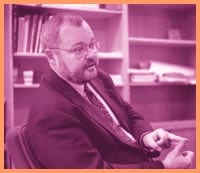Queers are a dancing people. We love to kick up our heels when we
celebrate – but that’s getting harder and harder to do in the gay village.
“We have to protect dancefloor space,” says Fly manager, Shaun Ryker. “We lost One Isabella, the Web, Liquid, Joy. Boots is gone. And there’s rumours that the Barn’s going to end up being condos in a couple of years. Then what’s left?”
Some of those clubs closed under pressure from the area’s gay city councillor.
And add to the list the goth Queen West bar Sanctuary, and the upcoming closure of club kid hang out, Industry – both popular with gay clientele.
Where do we go now?
Zoning by-laws, initiated in 1982, make it nearly impossible to open a dancefloor on Church St.
“It’s all been constructed around separating residential from commercial,” says City Councillor Kyle Rae. “In my experience, people who want to put in dancefloors have a bad track record of ill treating their neighbours.”
Church St itself is zoned commercial and you can open pretty much any type of restaurant or bar along the strip. But you cannot acquire a valued “entertainment” licence to run a dance club if your site abuts residential areas (which all of Church St does), mostly due to sound problems in the past.
“I get complaints from gay people who go to dances, who go to discos, go to night clubs and they get home and they can’t sleep because of noise,” says Rae.
Tango owner Sean Roach supports Rae’s sentiment, even if a few years back his own bar fell on the wrong side of neighbouring residents’ wrath, “I’m not saying that great gay dance space wouldn’t be a wonderful addition to Church because it would. But part of the beauty of downtown Toronto is that people live here, too. They keep it clean and they keep it vital. That’s really important. And if we’re going to do something, we have to remember that people live here.”
Tango, the only new dancefloor on Church in recent years, complied with the rules by making some major structural changes. “The city inspectors came down pretty heavy at the time. We didn’t conform,” admits Roach.
Without an entertainment licence any bar or restaurant is allowed a small percentage of dancefloor space in relationship to the whole premise.
“Total entertainment space includes your stage, pool tables, dancefloor, your deejay booth – all that kind of stuff. We didn’t conform -so they made us take down a pool table and decrease the size of the dance floor. And then we were fine. Upstairs it used to be the entire space was dancing – now it’s just the south side and we restricted it with some stand up rails. We boarded up all the windows, sound insulated all the doors, eliminated the skylights.”
The only option the city offers is the Entertainment District, in the Richmond St area. It’s packed full of straight clubs – and is almost a riot scene at closing time.
But shuffling queer partiers into the bursting entertainment district is not a solution – as the Inside Out Festival found out recently. It holds screenings at the Paramount cinema.
“Richmond St has always been that very hetero club scene but I think it’s getting more suburban,” says festival director, Rachel Giese. “The way it’s going with the Hooters opening down there and stuff, it’s completely catering to that suburban, frat boy kind of energy and clientele. It’s a very weird neighbourhood that sort of way.
“We’ve had really mixed experiences,” reports Giese about reactions to festival parties at clubs in the area. “All the owners pay lip service knowing that they have gay clientele. But most of the issues we had weren’t with owners – it was more with the regular patrons. They said stuff. They said homophobic things. There was no one really horrible incident. It was just stupid stuff – that kind of juvenile name-calling.”
It’s a concern shared by Constable Rich Petrie of 52 Division’s plainclothes squad. He says policing that area on Friday and Saturday nights “taxes our resources,” with half of the division’s foot and bicycle patrols absorbed.
Squad cars remain more evenly distributed throughout the division.
In 1994, Rae joined a fight to extend the limited areas of the city that qualified for an entertainment licence. The expanded area now includes Church St south of Queen and Yonge St north to Carlton. An area fairly close to the centre of the gay community’s, he says.
“Shifting that over in 1994 provided a far greater opportunity and no one has taken it,” complains Rae. “That’s my disappointment.”
Tango’s Roach points out the viability of the old bingo hall at Church near Shuter (slightly outside the designated area) amongst other locations that could be developed near the ghetto.
“There’d be more gay dance clubs – they’d be legal and I’d help them,” promises Rae.

 Why you can trust Xtra
Why you can trust Xtra


